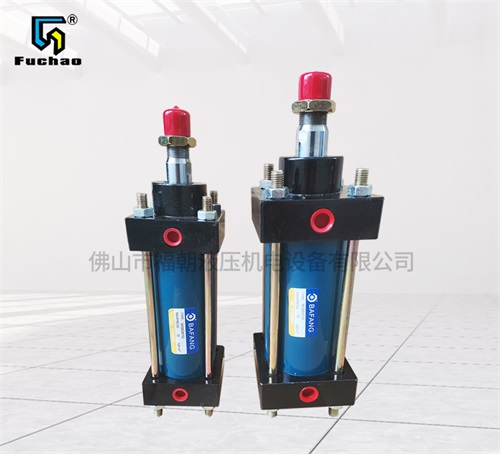Hydraulic cylinder It is usually composed of rear end cover, cylinder barrel, piston rod, piston assembly, front end cover and other main parts; In order to prevent oil leakage outside the hydraulic cylinder or from the high-pressure chamber to the low-pressure chamber, sealing devices are installed between the cylinder barrel and the end cover, piston and piston rod, piston and cylinder barrel, piston rod and front end cover, and dust prevention devices are also installed outside the front end cover; In order to prevent the piston from hitting the cylinder head when rapidly returning to the end of the stroke, the end of the hydraulic cylinder is also equipped with a buffer device; Sometimes an exhaust device is also required.
The sealing chamber formed by the cylinder block assembly and the piston assembly bears the effect of oil pressure. Therefore, the cylinder block assembly should have sufficient strength, high surface accuracy and reliable sealing.

Connection form of cylinder barrel and end cover: a. Flange connection b. Half ring connection d. Pull rod connection f. Internal thread connection
(1) Flange connection is simple in structure, convenient in processing and reliable in connection. However, it requires sufficient wall thickness at the end of cylinder barrel to install bolts or screw in screws. It is a common connection form.
(2) The half ring connection can be divided into two types: the outer half ring connection and the inner half ring connection. The half ring connection has good workmanship, reliable connection and compact structure, but it weakens the cylinder strength. Half ring connection is widely used in the connection of seamless steel tube cylinder and end cover.
4) The pull rod connection has simple structure, good processability and strong versatility, but the volume and weight of the end cover are large, and the pull rod will stretch longer after being stressed, affecting the effect. It is only applicable to medium and low-pressure hydraulic cylinders with small length.
(5) Welded connection has high strength and simple manufacturing, but it is easy to cause cylinder deformation during welding.
The cylinder barrel is the main body of the hydraulic cylinder, and its inner hole is generally manufactured by boring, reaming, rolling or honing, and the surface roughness is required to be 0.1~0.4 μ m. The piston and its sealing elements and supporting elements can slide smoothly, thus ensuring the sealing effect and reducing wear; The cylinder barrel shall bear great hydraulic pressure, so it shall have sufficient strength and rigidity. The end cover is installed at both ends of the cylinder barrel and forms a closed oil cavity with the cylinder barrel, which also bears great hydraulic pressure. Therefore, the end cover and its connectors should have sufficient strength. The strength shall be considered in the design, and the structural form with better processability shall be selected.
The piston assembly is composed of piston, piston rod, connecting piece, etc. With the different working pressure, installation method and working conditions of the hydraulic cylinder, the piston assembly has a variety of structural forms.
Connection form of piston and piston rod: threaded connection and half ring connection
The connection between the piston and the piston rod is usually in the form of threaded connection and half ring connection. In addition, there are integral structure, welded structure, taper pin structure, etc. Threaded connection, simple structure, easy assembly and disassembly, but generally requires a nut locking device; Half ring connection has high connection strength, but its structure is complex and it is inconvenient to assemble and disassemble. Half ring connection is mostly used in high pressure and high vibration situations.



